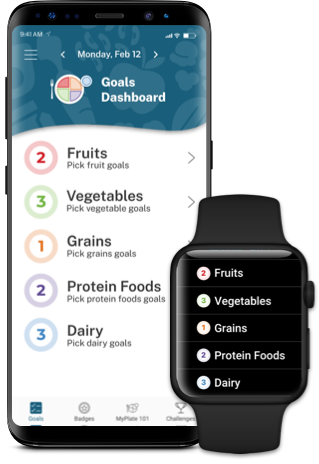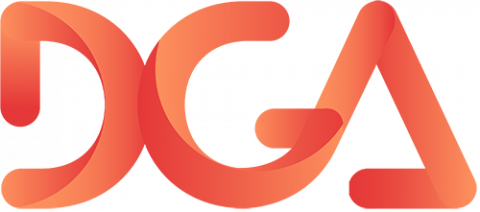Protein Foods
Vary your protein routine.
What foods are in the Protein Foods Group?
Protein Foods include all foods made from seafood; meat, poultry, and eggs; beans, peas, and lentils; and nuts, seeds, and soy products. Beans, peas, and lentils are also part of the Vegetable Group. To learn more, visit the Beans, Peas, and Lentils page.
Eat a variety of protein foods to get more of the nutrients your body needs. Meat and poultry choices should be lean or low-fat, like 93% lean ground beef, pork loin, and skinless chicken breasts. Choose seafood options that are higher in healthy fatty acids (called omega-3s) and lower in methylmercury, such as salmon, anchovies, and trout.
If you are vegetarian or vegan, the advice to eat meat, poultry, and seafood does not apply to you. Vegetarian protein options include beans, peas, lentils, nuts, seeds, and soy products.
More about the Protein Foods Group
The table below lists amounts that count as 1 ounce-equivalent in the Protein Foods Group towards your daily recommended amount. Note: Click on the title row to expand the table. If you are on a mobile device, you may need to turn it to see the full table.
*These are general recommendations by age. Find the right amount for you by getting your MyPlate Plan.
| Daily Recommendation* in Ounce-Equivalents (oz-equiv) | ||
|---|---|---|
| Toddlers | 12 to 23 months | 2 oz-equiv |
| Children |
2-3 yrs 4-8 yrs |
2 to 4 oz-equiv 3 to 5½ oz-equiv |
| Girls |
9-13 yrs 14-18 yrs |
4 to 6 oz-equiv 5 to 6½ oz-equiv |
| Boys |
9-13 yrs 14-18 yrs |
5 to 6½ oz-equiv 5½ to 7 oz-equiv |
| Women |
19-30 yrs 31-59 yrs 60+ yrs |
5 to 6½ oz-equiv 5 to 6 oz-equiv 5 to 6 oz-equiv |
| Men |
19-30 yrs 31-59 yrs 60+ yrs |
6½ to 7 oz-equiv 6 to 7 oz-equiv 5½ to 6½ oz-equiv |
This chart lists specific amounts that count as 1 ounce-equivalent (oz-equiv) in the Protein Foods Group towards your daily recommended intake:
| Amount that counts as 1 oz-equiv in the Protein Foods Group | |
|---|---|
| Meats |
1 ounce cooked lean beef, goat, ham, lamb, or pork 1 ounce cooked lean ground beef or pork 1 slice of luncheon or deli meats (beef, chicken, ham, pork, turkey) 1 ounce cooked game meats (bear, bison, deer, elk, moose, opossum, rabbit, venison) 1 ounce cooked organ meats |
| Poultry |
1 ounce cooked (without skin) chicken, ostrich, or turkey 2 ounces cooked Cornish hen, duck, goose, pheasant, or quail 1 sandwich slice of turkey or chicken breast (4½" x 2½" x ⅛") |
| Seafood |
1 ounce cooked finfish (black sea bass, catfish, cod, flounder, freshwater trout, haddock, hake, halibut, herring, light tuna, mackerel, mullet, perch, pollock, salmon, sea bass, snapper, sole, tilapia, whiting) 1 ounce cooked shellfish (clams, crab, crayfish, lobster, mussels, octopus, oysters, scallops, shrimp, squid (calamari) 1 ounce canned fish (anchovies, freshwater trout, herring, light tuna, salmon, sardines) |
| Eggs |
1 egg 1 ½ egg whites (or 3 tablespoons liquid egg white product) |
| Nuts, seeds, and soy products |
½ ounce of nuts (12 almonds, 24 pistachios, 7 walnut halves) ½ ounce of seeds (chia, flax, pumpkin, sesame, sunflower, or squash seeds) hulled, roasted 1 tablespoon of almond, cashew, peanut, or sunflower butter, or sesame paste (tahini) ¼ cup (about 2 ounces) of tofu 1 ounce tempeh, cooked |
| Beans, peas, and lentils |
¼ cup of cooked beans, peas or lentils (such as bayo, black, brown, fava, garbanzo, kidney, lima, mung, navy, pigeon, pink, pinto, or soy, or white beans, or black-eyed peas (cow peas) or split peas, and red, brown, and green lentils) ¼ cup of baked beans or refried beans ¼ cup of frozen edamame (young soybeans) 1 falafel patty (2 ¼", 4 oz) 6 tablespoons hummus |
Why is it important to select a variety of choices from the Protein Foods Group?
Protein foods provide nutrients important for maintaining your health and body.
Many Americans get the right amount of protein needed from meat, poultry, and eggs, but do not meet the recommendations for seafood or nuts, seeds, and soy products. Meeting this can help increase the amount of important nutrients your body needs, like unsaturated fats, dietary fiber, and vitamin D. It also helps limit the amount of sodium and saturated fats from you get from processed meat and poultry.

Health Benefits
- Proteins function as building blocks for bones, muscles, cartilage, skin, and blood. They are also building blocks for enzymes, hormones, and vitamins. Proteins are one of three nutrients that provide calories (the others are fat and carbohydrates).
- Nutrients provided by various protein foods can differ. Varying your protein food choices can provide your body with a range of nutrients designed to keep your body functioning well. B vitamins help build tissue and aid in forming red blood cells. Iron can prevent anemia. Magnesium helps build bones and supports muscle function. Zinc can support your immune systems.
- EPA and DHA are omega-3 fatty acids found in varying amounts in seafood. Eating 8 ounces per week of seafood may help reduce the risk for heart disease.
Vegetarian Choices in the Protein Foods Group
Vegetarians get enough protein from this group as long as the variety and amounts of foods selected are adequate. Protein sources from the Protein Foods Group for vegetarians include eggs (for ovo-vegetarians); beans, peas, and lentils; nuts, seeds (including nut and seed butters), and soy products (tofu, tempeh).
For more information on beans, peas, and lentils, see Beans, Peas, and Lentils page.
Food Group Gallery
Curious about the foods in the Protein Foods Group? What does a one-ounce equivalent of protein foods look like? Check out the Food Group Gallery! This is also a great resource if you're trying to change up the protein foods that you eat or you want to bump up the variety with something new.
Black sea bass, sunflower seeds, tofu... they're all waiting for you in the Food Group Gallery!






